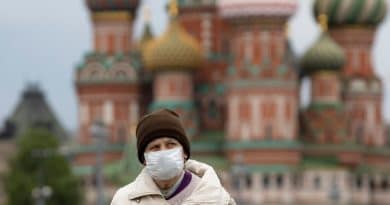Brandon teepee art project celebrates strength, resilience during Truth and Reconciliation Week
Weaving together truth, reconciliation and healing, community members in Brandon created a commemorative teepee Saturday.
The art project for the upcoming Truth and Reconciliation Week in the southwestern Manitoba city was designed by Canupawakpa Dakota Nation visual artist Jessie Jannuska.
“The piece is called Coming Together, and I really hope that people do come together when they look at this teepee and they feel strength and resilience, and just feel honoured,” Jannuska said.
The teepee will be displayed at Brandon’s Riverbank Discovery Centre for Truth and Reconciliation Week, which officially begins Monday and leads up to the National Day for Truth and Reconciliation on Sept. 30, also known as Orange Shirt Day.
In Brandon, there will be events at the Discovery Centre every day from Tuesday to Sunday.
The teepee will be used by the Brandon Friendship Centre’s Sixties Scoop support program to share teachings, promote healing and encourage reconciliation, said program co-ordinator Julia Stoneman.

During what’s referred to as the Sixties Scoop — which actually began in the early 1950s into continued into the early 1990s — child welfare authorities took thousands of Indigenous children from their families and communities, and placed them with non-Indigenous foster or adoptive parents.
Stoneman described it as a continuation of the residential school system.
The message behind Coming Together is a critical part of truth and reconciliation, Stoneman said, because it encourages people to join in learning the stories, history and experiences of people affected by residential schools, the Sixties Scoop and other colonial traumas.
Hearing the experiences of survivors adds a human face to that history, she said, making reconciliation a personal experience for people.
Jannuska hopes that people who see the art project will feel the strength and resilience of Indigenous people in Canada.
“You can’t just keep people in the dark.… You need to let people speak about their truth,” Jannuska said.
“I think these families are really sad. They are estranged. They want their children back, they want the connectivity, they want the love back.”
Events like the teepee community art project serve as a way to honour and acknowledge their experiences, she said, while strengthening cultural identity and self-love.
There is a strong Indigenous presence in Brandon and the community is rallying to support reconciliation, Stoneman said, by encouraging people to live as their authentic selves.
“This is our way of honouring those people and helping them to find their identity and their community and their culture again … because they lost that too when they were sent away,” Stoneman said. “Now they’re able to come together and they’re able to learn that.”

Jannuska will be at the Discovery Centre on Friday afternoon to participate in an Orange Shirt Day walk and to answer any questions people have about the Coming Together teepee.
“This community project is an act of healing.… It can be a communal, cathartic thing that the community can jump in on,” she said.
A week for education, celebration
The roots of this week’s events go back to the creation of the Brandon Urban Aboriginal People’s Council in late 2010, said council co-ordinator Michèle LeTourneau.
“It included Indigenous organizations and governments and institutions and organizations that were non-Indigenous, all coming together to work together to ensure that Indigenous people are reflected in their community,” she said.
Those efforts culminated in Brandon’s Truth and Reconciliation Week in 2021, centered on the principles of “commemoration, education and celebration.”
The goal of the week’s events is to inspire the entire community to work together in the pursuit of reconciliation, which “is something that we all need to do together, Indigenous and non-Indigenous,” LeTourneau said.
“We can create lines of respect, of friendship, of working together to make Brandon a better place for everyone.”
Educational opportunities have been woven into programming to help attendees better understand Canada’s colonial past. The conversations sparked during Truth and Reconciliation week are part of a bigger question — how to keep reconciliation alive every day of the year, LeTourneau said.
“It really starts within each of us, whether Indigenous or non-Indigenous, and it’s a sort of an inner reconciliation with our own selves,” she said.
“That carries forward into … changing thoughts, changing minds and hearts and then, you know, that seeps into your daily existence.”

She encourages those who attend any of the free events to come with an open heart and open mind.
That includes Friday’s Orange Shirt Day Walk, honouring residential school survivors and those who did not make it home. It begins at the Riverbank Discovery Centre at 1 p.m. and continues to the former Brandon residential school site.
Sioux Valley Dakota Nation survivors will be at the site, LeTourneau said, to see “the mighty support that the people of Brandon have for them.”
Saturday marks a day of celebration of Indigenous culture with an event titled Healing by the River.
“I call it an evening of ceremony and performance, and that is celebrating the rich, rich culture that was almost extinguished but was not,” LeTourneau said.
“It’s a really beautiful way to bring everyone together to celebrate.”

